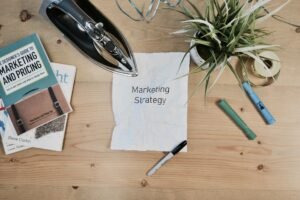Creating Effective Employee Development Programs: Investing in Professional Growth
In today’s dynamic and competitive business landscape, organizations must invest in the growth and development of their employees. Providing opportunities for professional growth not only enhances individual skills but also contributes to overall organizational success. Effective employee development programs not only attract and retain top talent but also foster a culture of continuous learning and improvement. In this blog post, we will explore strategies for creating impactful employee development programs that invest in professional growth.
- Identify Development Needs: Before designing an employee development program, it is essential to identify the specific development needs of your workforce. Conduct thorough assessments, such as performance evaluations and skills gap analyses, to identify areas where employees require additional training or support. Gather feedback from employees through surveys or one-on-one discussions to understand their career aspirations and development goals. This information will serve as the foundation for designing targeted development initiatives.
- Provide a Variety of Learning Opportunities: A one-size-fits-all approach to employee development is ineffective. Instead, provide a range of learning opportunities to cater to diverse learning styles and preferences. Offer a combination of in-person workshops, online courses, on-the-job training, coaching, mentoring programs, and conferences. Encourage employees to take ownership of their learning journey by providing resources, such as access to learning platforms, books, and industry publications. Offering a variety of options ensures that employees can choose the methods that best suit their needs and interests.
- Support Continuous Learning: Employee development should not be a one-time event but an ongoing process. Encourage a culture of continuous learning within the organization. Emphasize the importance of staying up-to-date with industry trends and evolving technologies. Encourage employees to pursue certifications, attend webinars, or participate in professional associations. Provide dedicated time for learning and growth, allowing employees to balance their daily responsibilities with ongoing development activities. Recognize and reward employees who actively engage in continuous learning.
- Foster Internal Knowledge Sharing: One of the most effective ways to promote professional growth is by fostering internal knowledge sharing. Encourage employees to share their expertise, experiences, and best practices with their colleagues. Facilitate cross-departmental collaboration and encourage mentorship programs, where experienced employees can guide and support those who are seeking to develop specific skills or knowledge. Establish platforms for knowledge exchange, such as internal blogs, discussion forums, or regular lunch-and-learn sessions. By tapping into the collective wisdom of your workforce, you create a culture of learning and collaboration.
- Measure and Evaluate Program Effectiveness: To ensure the effectiveness of employee development programs, establish clear metrics and evaluation processes. Regularly assess the impact of the programs on employee performance, engagement, and skill development. Use surveys, feedback sessions, and performance evaluations to gather insights from participants. Analyze data and feedback to identify areas for improvement and make necessary adjustments to the program. Continuously refine and adapt the development initiatives to meet the evolving needs of employees and the organization.
Investing in professional growth through effective employee development programs is a win-win situation for both employees and organizations. By identifying development needs, providing a variety of learning opportunities, supporting continuous learning, fostering internal knowledge sharing, and measuring program effectiveness, organizations can create a culture of growth and development. Employees who feel supported and invested in are more engaged, motivated, and equipped to contribute to the organization’s success. Remember, a commitment to employee development is an investment in the long-term growth and competitiveness of the organization.

































